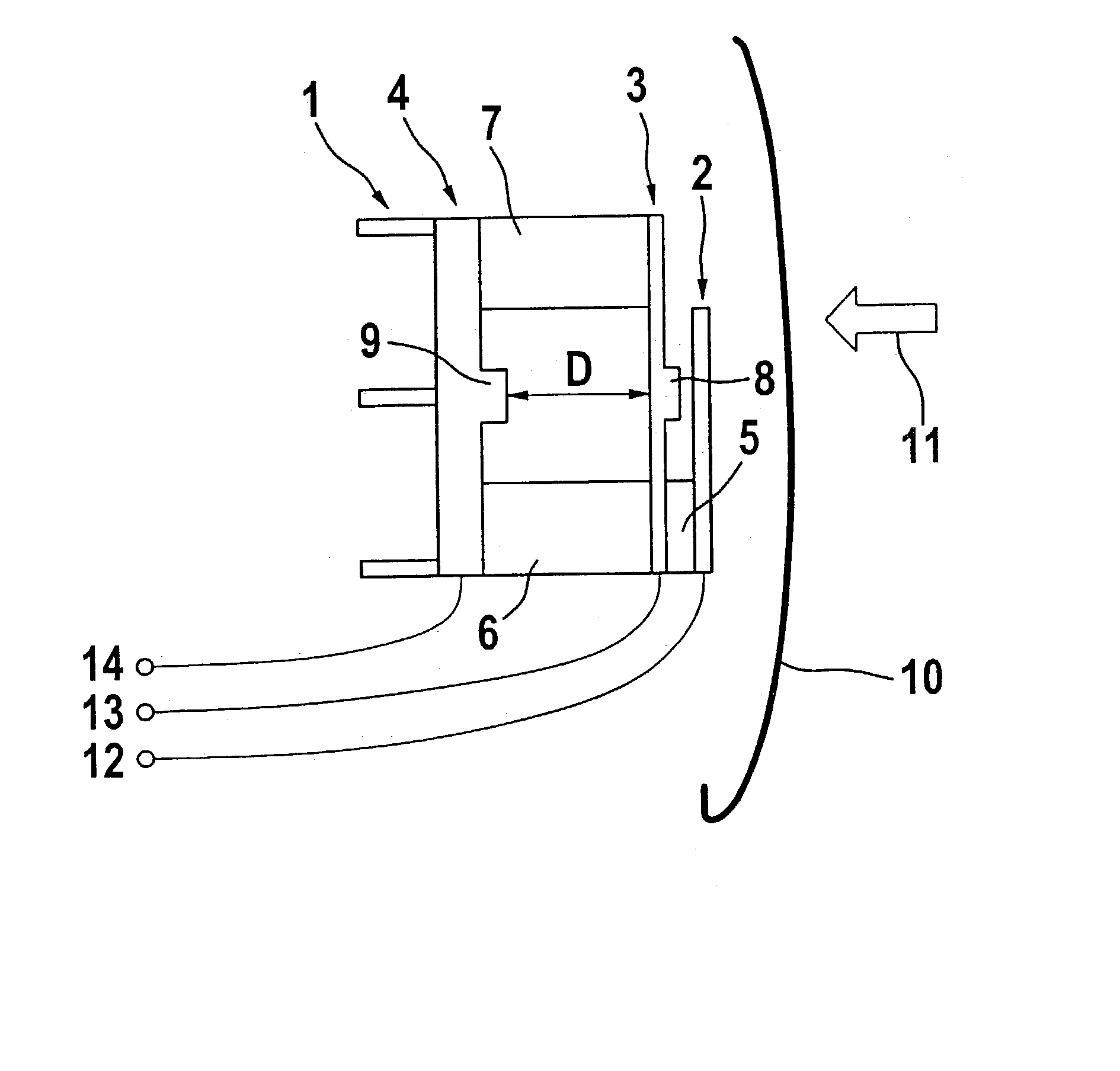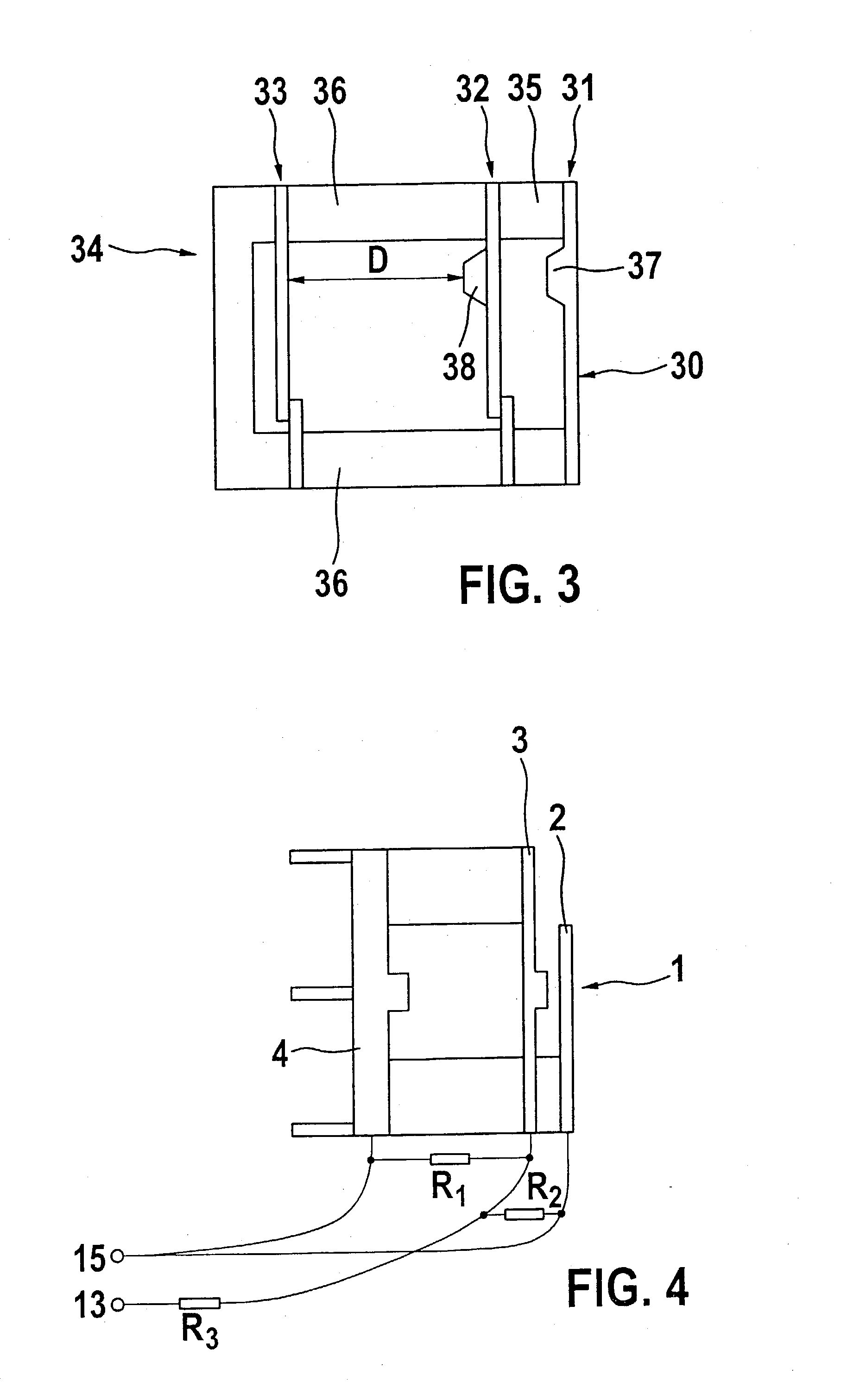Sensor arrangement
a technology of sensors and arranged parts, applied in the direction of electric devices, apparatus for force/torque/work measurement, vehicular safety arrangements, etc., can solve the problems of preventing rapid detection, preventing recognition of fixed-pole crash into the door of the vehicle too late, and preventing separation
- Summary
- Abstract
- Description
- Claims
- Application Information
AI Technical Summary
Benefits of technology
Problems solved by technology
Method used
Image
Examples
Embodiment Construction
[0037] An exemplary embodiment of a sensor system 1 according to FIG. 1 shows an upper electroconductive contact element 2, a middle electroconductive contact element 3 and a third electroconductive contact element 4 as base element. Situated between contact elements 2, 3 and 4 are compressible insulation layers 5, 6 and 7 made, for example, of foamed plastic, which spatially separate contact elements 2, 3 and 4 at a predefined distance, distance D between middle contact element 3 and base element 4 in particular being significant here for the evaluation of the sensor signals.
[0038] Sensor system 1 is installed, for example, in door trim 10 of a motor vehicle (not shown here), and is able to be deformed in a direction 11 during an accident. Contact elements 2, 3 and 4, possibly with bars 8 and 9, are provided in such a way that an electrical contact is ensured between these elements 2, 3 and 4 in response to complete compression of insulation layers 5, 6 and 7 because of a crash.
[00...
PUM
| Property | Measurement | Unit |
|---|---|---|
| velocity | aaaaa | aaaaa |
| compressible | aaaaa | aaaaa |
| distances | aaaaa | aaaaa |
Abstract
Description
Claims
Application Information
 Login to View More
Login to View More - R&D
- Intellectual Property
- Life Sciences
- Materials
- Tech Scout
- Unparalleled Data Quality
- Higher Quality Content
- 60% Fewer Hallucinations
Browse by: Latest US Patents, China's latest patents, Technical Efficacy Thesaurus, Application Domain, Technology Topic, Popular Technical Reports.
© 2025 PatSnap. All rights reserved.Legal|Privacy policy|Modern Slavery Act Transparency Statement|Sitemap|About US| Contact US: help@patsnap.com



